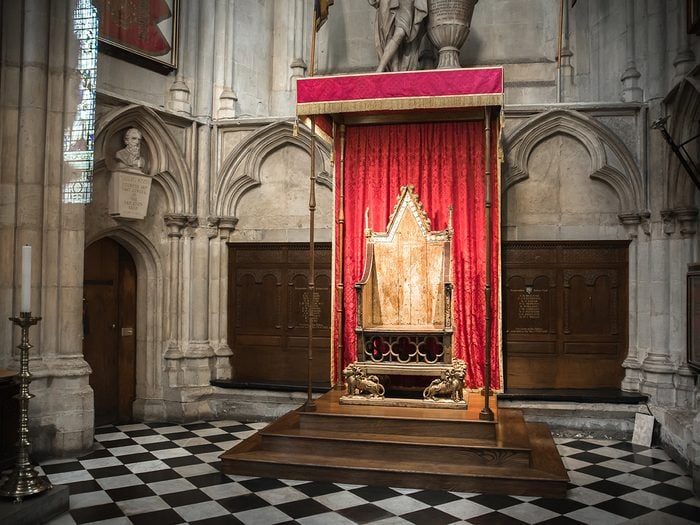
A Thousand Years of Coronations
On May 6, King Charles III will be crowned in Westminster Abbey with his consort, Queen Camilla. While Charles became King at the moment of the death of his mother, Queen Elizabeth II, on Sept. 8, 2022, the coronation ceremony serves to symbolize the monarch’s lifelong commitment to the roles of sovereign and supreme Governor of the Church of England. At the event, King Charles III will be crowned King of the United Kingdom and Commonwealth realms (including Canada). He’ll be anointed with holy oil, and will swear to govern as a constitutional monarch according to the laws decided in parliament.
While key traditions associated with modern royal weddings, christenings and jubilees date from Queen Victoria’s reign in the 19th century, the coronation service is much older. It was written by St. Dunstan, Archbishop of Canterbury in AD 973, and Westminster Abbey has been the setting for coronations since 1066. Charles III will be the 40th monarch to be crowned there.
Despite centuries of past precedents, each monarch brings their own personal touch to their coronation, whether it’s spending lavishly or sticking to a budget, commissioning new music or new Crown Jewels, or, more recently, inviting television cameras into Westminster Abbey. Here are 12 memorable British royal coronations that shaped the history of the monarchy from medieval to modern times—including a few that did not go according to plan.
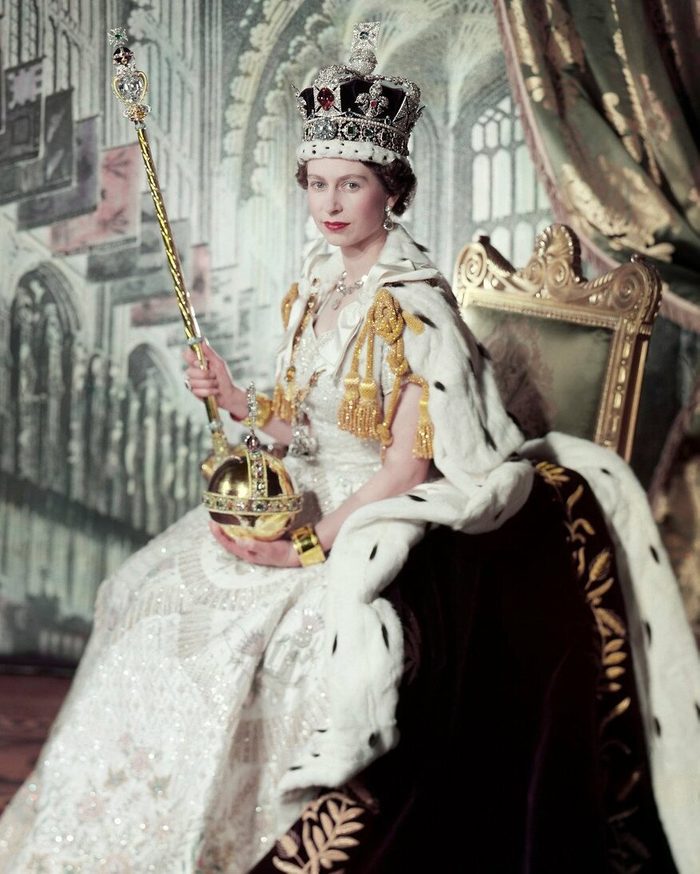
The Coronation of Queen Elizabeth II (1953)
Coronation on Television
The accession of the 25-year-old Queen Elizabeth II on Feb. 6, 1952, symbolized the beginning of “a new Elizabethan age” after the austerity of the Second World War. The decision to invite television cameras into Westminster Abbey to film the whole ceremony (except for the sacred anointing of the monarch) on June 2, 1953, seemed to bring the monarchy into the modern age, allowing audiences around the world to feel as though they were part of this landmark event. More than 250-million people watched on television as Queen Elizabeth II was crowned Queen of the United Kingdom and the Commonwealth realms, many purchasing television sets for the first time for the occasion and hosting coronation parties. In Westminster Abbey, the four-year-old future King Charles III attended the ceremony, seated between his aunt, Princess Margaret, and grandmother, Queen Elizabeth the Queen Mother.
Take a look back at the incredible life of Queen Elizabeth II.
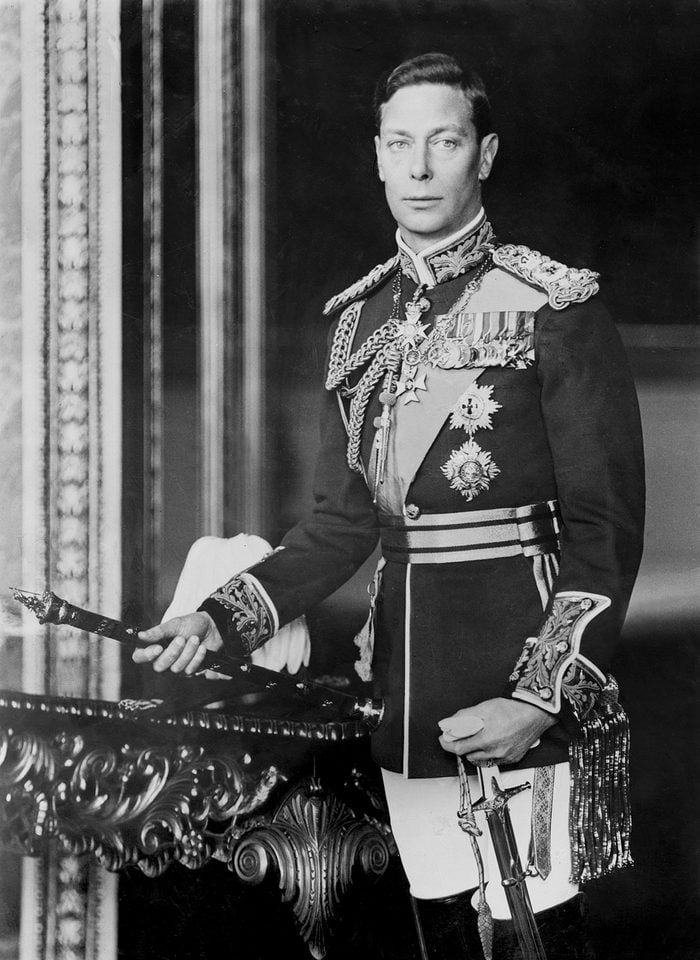
The Coronation of King George VI (1937)
A Change in King
While 16 months passed between Elizabeth II’s accession and coronation, her father, King George VI, didn’t have nearly so long to wait. When Edward VIII abdicated to marry the twice-divorced American Wallis Simpson, George VI succeeded his brother as King, and was crowned just five months later on Dec. 11, 1936—the day originally scheduled for Edward’s coronation. Under the circumstances, the coronation followed past traditions to emphasize continuity, but there were a few significant departures. For the first time, the coronation was broadcast on the radio and film footage was shown in cinema newsreels. The coronation oath also changed to reflect the equal status of the United Kingdom and Dominions following the 1926 Balfour Declaration and 1931 Statute of Westminster. George VI swore “to govern the peoples of Great Britain, Ireland, Canada, Australia, New Zealand and the Union of South Africa, of your Possessions and the other Territories to any of them belonging or pertaining, and of your Empire of India, according to their respective laws and customs”—setting the tone for the development of the modern Commonwealth.
Get to know Queen Elizabeth’s great-grandchildren.
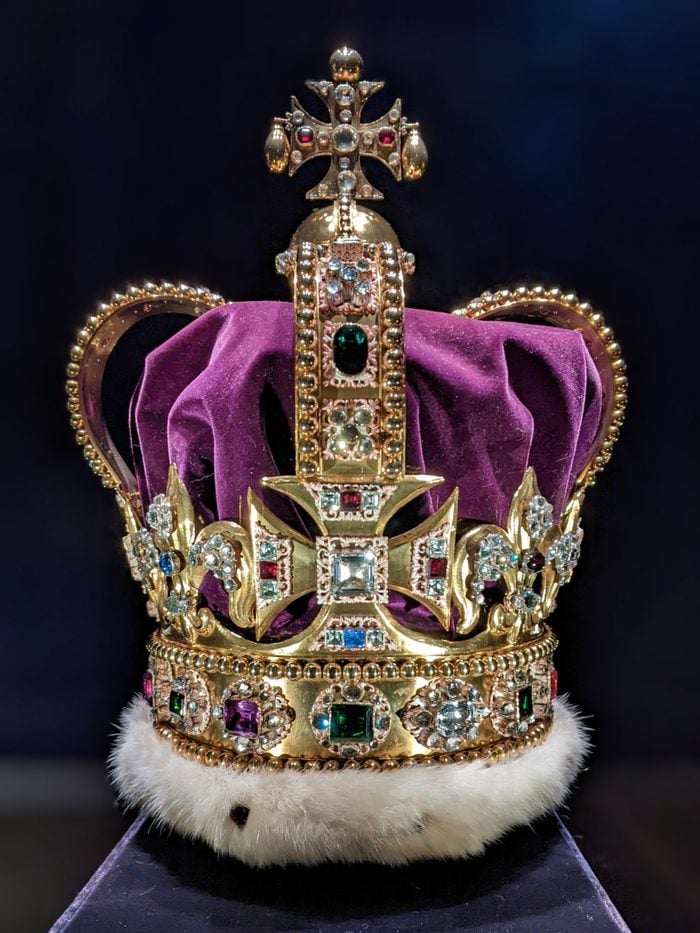
The Coronation of King George V (1911)
A New Crown
St. Edward’s Crown has been used at coronations since 1661, but it wasn’t permanently set with precious stones until much more recently. (Instead, gems were loaned by jewellers to decorate the crown for individual coronations, then returned after the ceremony.) For his 1911 coronation, King George V and his consort, Queen Mary, arranged for the crown to be permanently set with 444 precious stones. Queen Mary purchased an Art Deco-inspired crown for her own crowning as Queen consort, and this will be used to crown Queen Camilla at Charles III’s coronation.
George V’s coronation was also notable for the additional events planned around the coronation to showcase the British Empire and the Royal Navy. There was a Coronation Naval Review of the Fleet, which attracted a quarter-million spectators, and a Festival of Empire, which included “Inter-Empire Championships,” the forerunner of the modern Commonwealth Games.
Here are the 10 most memorable royal visits to Canada.
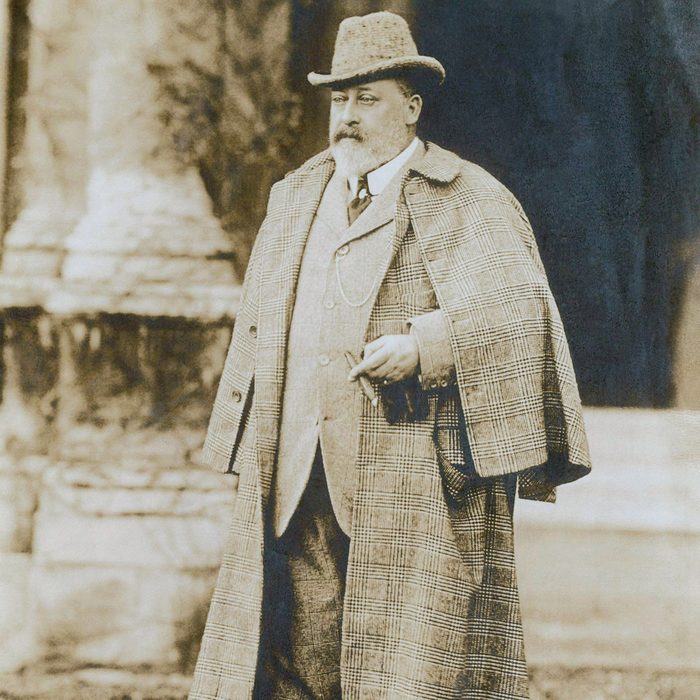
The Coronation of King Edward VII (1902)
A Medical Emergency
When Queen Victoria’s eldest son succeeded to throne in 1901 as King Edward VII at the age of 59, planning his coronation was a challenge. So much time had passed since Victoria’s coronation in 1838 that few people remembered how the ceremony should unfold. Luckily, Victoria’s elderly cousin, Princess Augusta of Cambridge was on hand to provide valuable insights for the planning committee.
Once the plans were in place, they were derailed by a medical emergency. Just two days before the planned coronation on June 26, 1902, Edward VII underwent an emergency operation for appendicitis on a table in the music room of Buckingham Palace. The coronation was rescheduled to Aug. 9. Despite his uncertain health, Edward VII refused suggestions that the ceremony, including the anointing, be condensed, stating, “If I am going to be done, I am going to be done properly.”
Discover 10 Canadian hotels that have hosted royal guests.
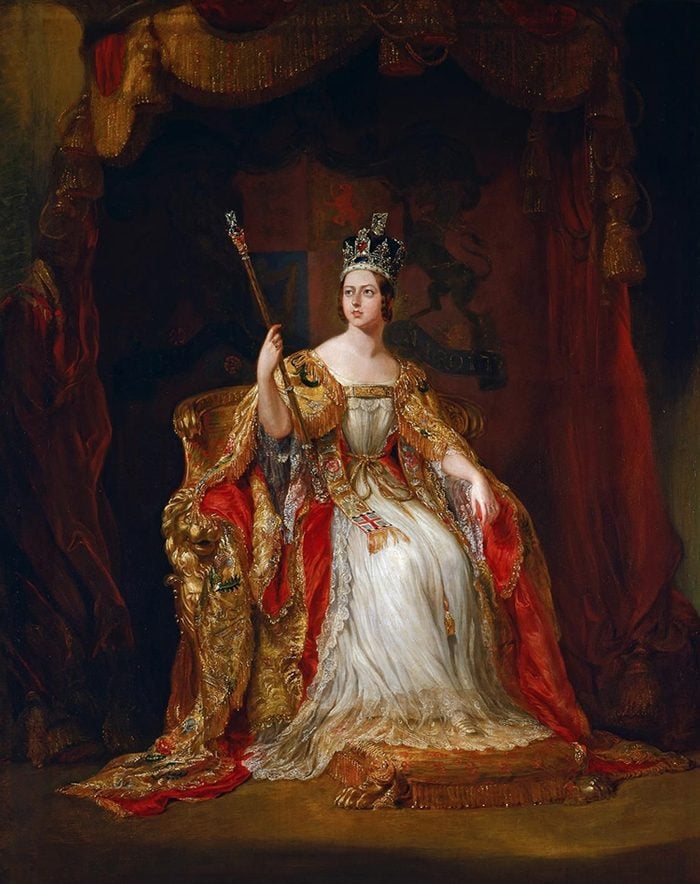
The Coronation of Queen Victoria (1838)
Leftovers in Westminster Abbey
The coronation of the 19-year-old Queen Victoria on June 28, 1838, took place without a rehearsal, resulting in numerous mishaps. When the Queen entered St. Edward’s chapel in Westminster Abbey, she found half-eaten sandwiches and empty bottles of wine on the altar, which had been enjoyed by guests involved in the ceremony including Prime Minister Lord Melbourne. An 82-year-old peer named Lord Rolle stumbled on the steps before the throne while paying homage to the Queen and rolled backward, regaining his footing with the Queen’s assistance. Queen Victoria noted another uncomfortable moment in her journal: “The Archbishop had (most awkwardly) put the [coronation] ring on the wrong finger, and the consequence was that I had the greatest difficulty to take it off again, which I at last did with great pain.”
The young Queen’s calm demeanour and good humour during all these unfortunate moments endeared her to the public. Throughout her long reign, Victoria would ensure royal ceremonies were better organized, introducing innovations that continue to the present day.
Here are more Queen Victoria facts most people don’t know.
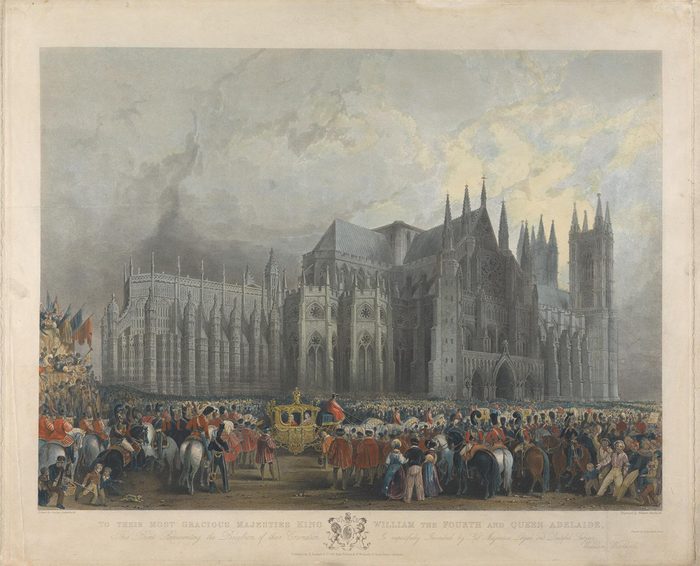
The Coronation of King William IV (1831)
The Half-Crown Nation
Queen Victoria’s uncle, William IV, was a retired naval officer who had no interest in royal ceremony. Over the course of his seven-year reign, he repeatedly tried to give away Buckingham Palace. (Neither the navy nor parliament was interested.) After first questioning whether a coronation was necessary at all, William ultimately conceded to a simplified ceremony. He agreed to travel to Westminster Abbey in the gold state coach (above) commissioned for the coronation of his father, King George III, but he refused to allow a coronation banquet and wore his admiral’s uniform rather than ceremonial dress. Tory members of parliament who objected to the comparative absence of pomp and circumstance nicknamed the ceremony,“The Half-Crown Nation.”
Don’t miss our ultimate guide to royal residences.
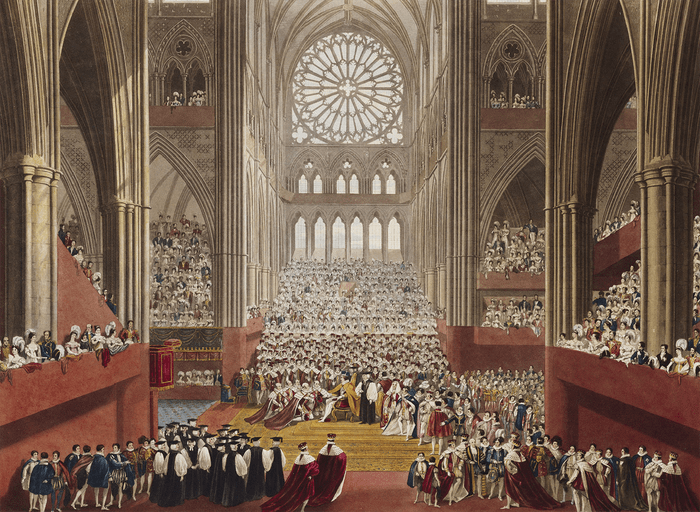
The Coronation of King George IV (1821)
No Invitation for the Queen Consort
William IV’s determination to hold a coronation on a budget may have been an effort to distance himself from his unpopular older brother (and predecessor), George IV. Known for his lavish spending, George IV had the most expensive coronation in British history, complete with a new crown decorated with 12,000 diamonds. An enthusiastic collector of French art and furnishings, he also commissioned an exact replica of Napoleon Bonaparte’s lavish coronation robes from a workshop in Paris—a controversial decision in the aftermath of the Napoleonic Wars.
His coronation would not be remembered for its pageantry, however, but for the King’s refusal to invite the Queen consort to the ceremony. When George IV’s estranged wife, Caroline of Brunswick, arrived at Westminster Hall, she was told by the doorman that she could not enter without a ticket. Her efforts to find another entrance were blocked by a line of soldiers. After arguing with numerous officials, the uncrowned consort departed in her carriage as the crowds chanted, “Shame! Shame!” She died two weeks later.
Check out the most scandalous royal memoirs ever published.
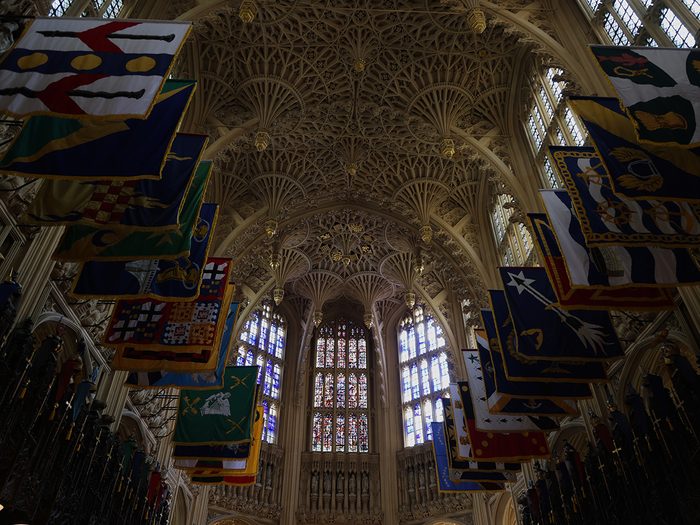
The Coronation of King George II (1727)
Coronation Anthems
The coronation of George IV’s great-grandfather, George II, also included extravagant fashions. George II’s Queen consort, Caroline of Ansbach, wore a dress so heavily encrusted with jewels that she required a pulley to lift the skirt so that she could kneel to take communion during the ceremony. The enduring legacy of George II’s coronation, however, was the composition of four choral coronation anthems by George Frederic Handel. The most famous of these anthems, Zadok the Priest, has been sung before the anointing at every subsequent monarch’s coronation.
In 2023, Charles III followed in George II’s footsteps by commissioning new coronation anthems. There will 12 original compositions performed at Charles III’s coronation, including an anthem by Andrew Lloyd Weber.
Here are 10 history podcasts worth adding to your playlist.
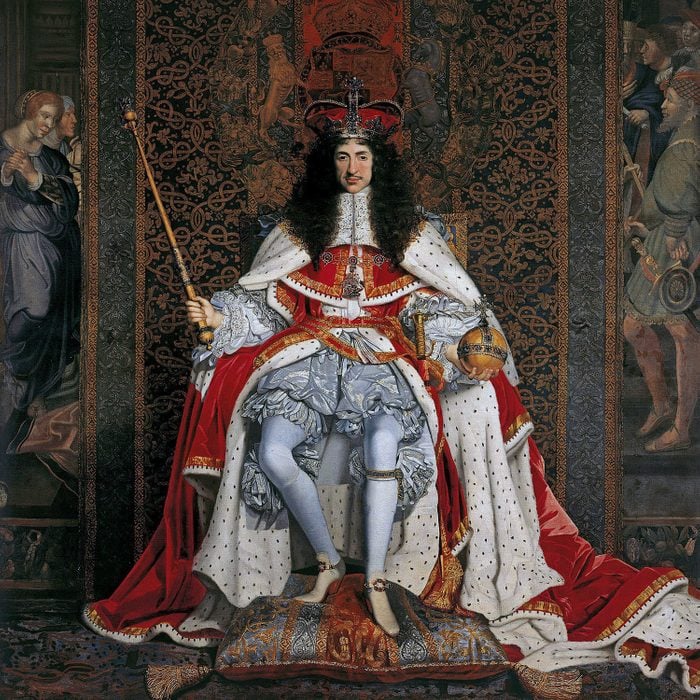
The Coronation of Charles II (1661)
New Crown Jewels
The English Civil Wars left the country without a king for 11 years. When Charles II returned to England to reclaim the throne in 1660, a coronation was essential to symbolize the restoration of the monarchy. Unfortunately, only one piece of coronation regalia had survived: the silver anointing spoon acquired by Henry II or his son Richard the Lionheart in the 12th century. Recognizing the urgent need for new Crown Jewels, Charles II commissioned a new St. Edward’s Crown, orb and sceptre from his goldsmith, Sir Edward Vyner—then defaulted on the payments for the regalia following the Stop of the Exchequer in 1672, when the state defaulted on its debts.
After the ceremony, the new Crown Jewels were stored in the Tower of London, where they made a tempting target for thieves. In 1671, an Anglo-Irish officer by the name of Colonel Thomas Blood gained access to the Tower of London disguised as clergyman, overpowered the Master of the Jewel House and stole St. Edward’s Crown. Blood was apprehended on Tower Wharf, shouting, “It was a gallant attempt, however unsuccessful! It was for a crown!” Security at the Tower of London would improve, but attempts to steal the Crown Jewels continue to this day.
Check out current estimates of how much the Crown Jewels are worth.
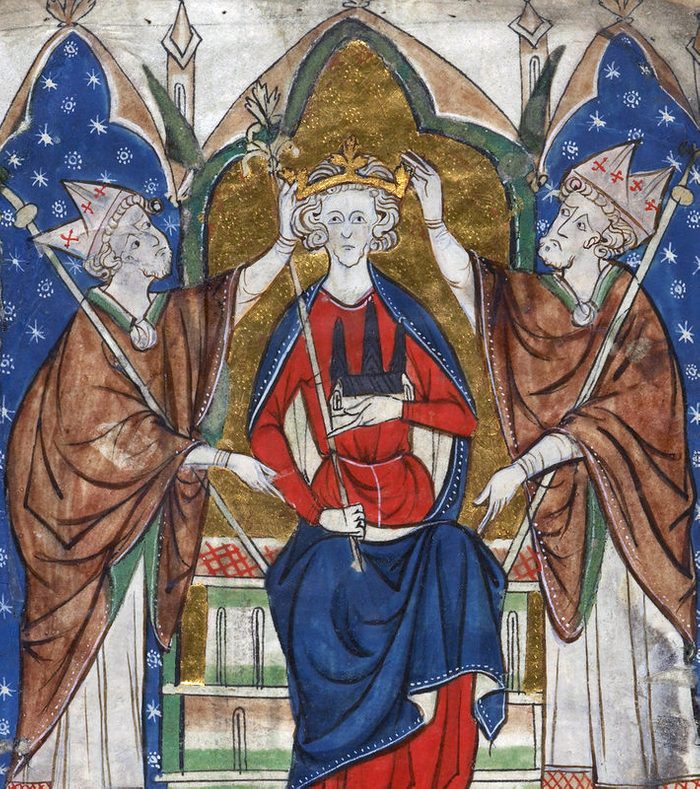
The Coronation of Henry III (1216 and 1220)
Two Coronations
Charles II wasn’t the only king who scrambled to find a crown in time for his coronation. When Henry III succeeded his father, the villainous King John, at the age of nine, he was left without royal regalia. (John had lost the Crown Jewels when his baggage train overturned in a marsh in 1215, as he hurried to flee rebel barons and a French invasion after repudiating Magna Carta earlier that year.)
The First Barons’ War was still raging when John died suddenly in 1216. With rebel barons and a French army occupying London, Westminster Abbey was not available as a coronation venue. Henry’s supporters hastily organized a ceremony at Gloucester Cathedral where the boy king was crowned with one of his mother’s circlets just 10 days after his father’s death. Neither the young king nor his regents thought this coronation was sufficient to guarantee a monarch’s authority in tumultuous times, so after the First Barons’ War ended and the French were defeated, the teenaged Henry petitioned the Pope for permission to be crowned again. In 1220, Henry III received a traditional coronation at Westminster Abbey.
Test your knowledge with these history questions people always get wrong.
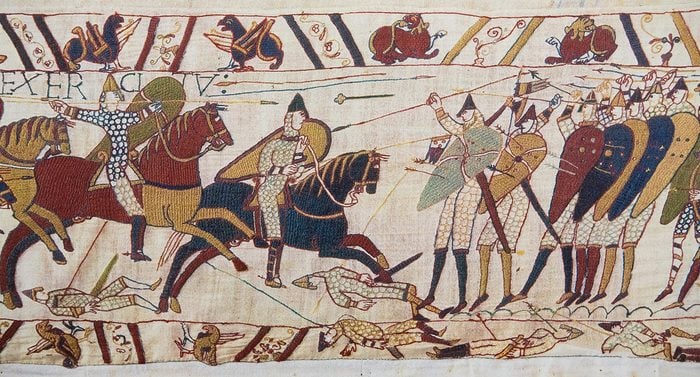
The Coronation of King William I (1066)
Riot on Coronation Day
After William, Duke of Normandy defeated the last Anglo-Saxon English King Harold II at the Battle of Hastings in 1066, he was crowned King William I at Westminster Abbey on Christmas Day. When the bishops performing the ceremony asked the English people if they accepted their new King, the crowds shouted their approval—in English. Unfortunately, William’s guards spoke only Norman French and thought they were hearing an assassination attempt. The guards began attacking the crowds and set fire to nearby buildings. Inside Westminster Abbey, the coronation guests panicked and stampeded out of the Abbey before the ceremony was over. The riot at the coronation left the new king so concerned about his personal security that he ordered the construction of the Tower of London as a royal residence, fortress and prison; a historic site which still stands today.
Discover 50 London attractions worth adding to your bucket list.
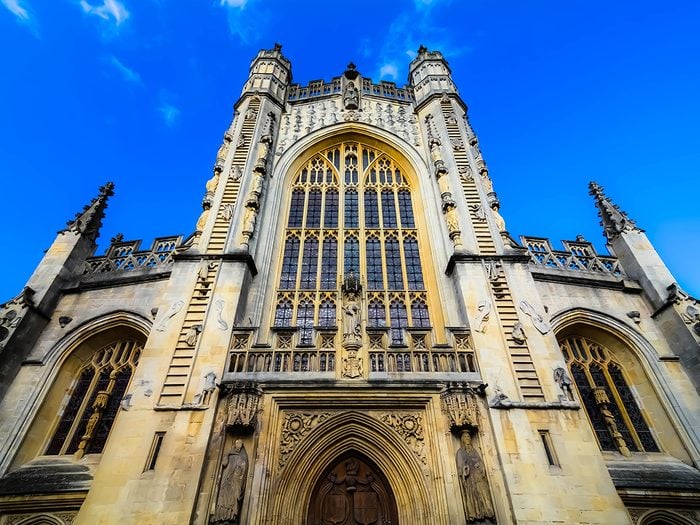
The Coronation of Edgar the Peaceable (973)
1000 Years of Monarchy
In 973, St. Dunstan, Archbishop of Canterbury, wrote the coronation service for the crowning of the Anglo-Saxon King of England, Edgar the Peaceable, and his consort, Aelfthryth, at Bath Abbey. The ceremony marked the zenith of Edgar’s reign rather than its beginning. By 973, Edgar had been king for 14 years, taking advantage of a lull in Viking attacks to acquire more ships and reform the monasteries.
In 1973, Queen Elizabeth II, Prince Philip and their children attended a service at Bath Abbey to mark the 1000th anniversary of Edgar the Peaceable’s coronation. When King Charles III is crowned, he will be following in the footsteps of a thousand years of kings and queens who pledged their lifelong commitment to their people in a coronation ceremony.
Next, take a look back at King Charles’s most memorable visits to Canada.